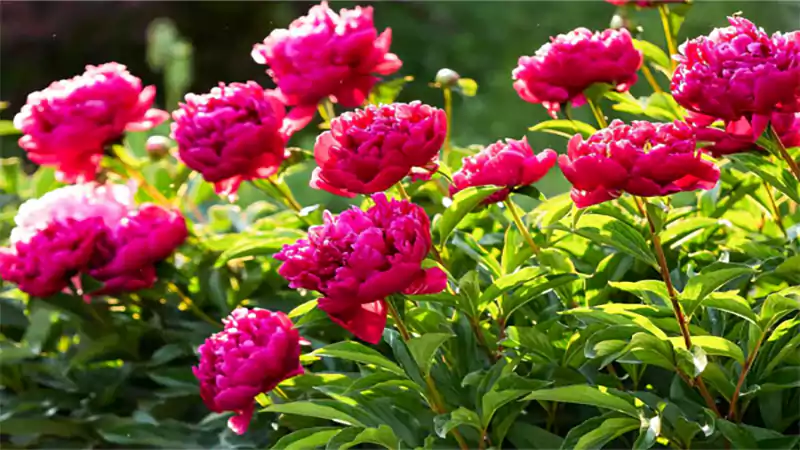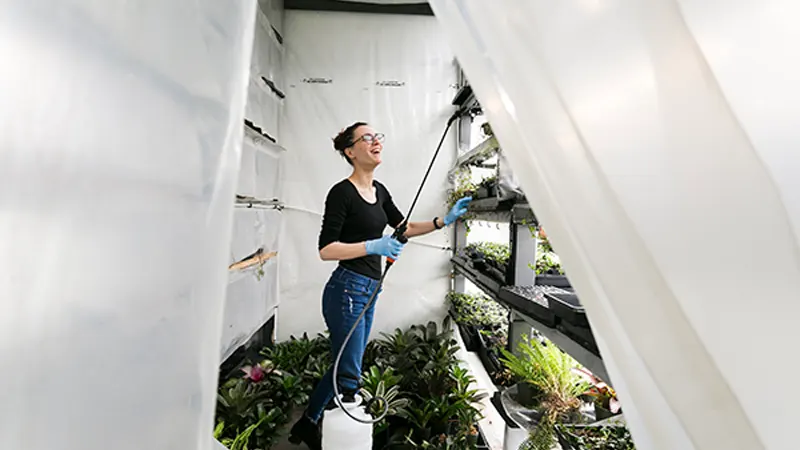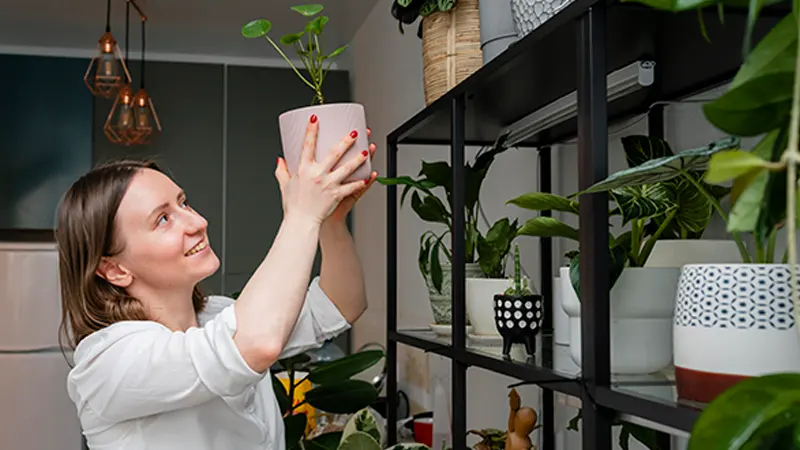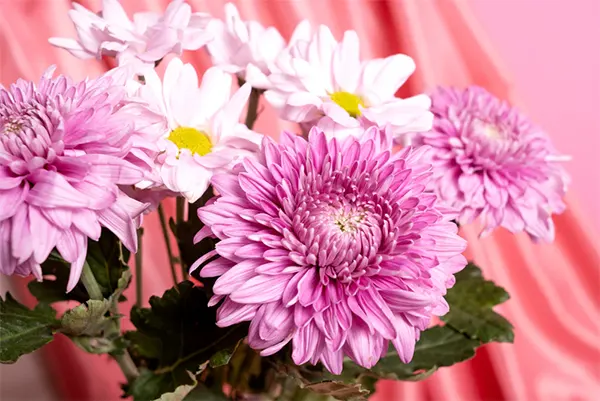
Colorful, captivating, and full of charm – flowers that start with C have a way of brightening any garden space. From Carnations to Chrysanthemums, these blooms come in countless shapes, shades, and scents.
If you are looking for vibrant flowers that combine beauty and character, you will surely love exploring these botanical marvels.
Each flower has its own deep meaning and holds a rich historical and cultural significance. Moving further, let us jump in and quickly discover some astonishing flowers that start with the letter C that can transform your balcony garden effortlessly!
Did You Know?
Many flowers that start with C carry deep symbolic meaning across different cultures. From Carnations symbolizing a range of emotions like love, admiration, and resilience to Chrysanthemums representing endurance and resilience, these flowers are hence known as the most gifted blooms worldwide.
20 Flowers That Start With C – Classic Carnation, Camellia, and Many More!
Here is a curated list of flowers that start with C, which can instantly uplift the vibe of any landscape. From classic Carnation to alluring Cana Lilly, the table covers all!
| S. No | Flower Name | Image | Description |
| 1 | Carnation | 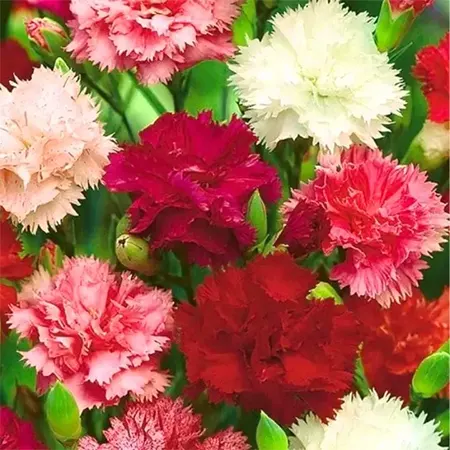 | Carnations are native to the Mediterranean region and are mostly known for their vibrant blooms. Botanically called Dianthus caryophyllus, Carnation flowers are mostly used for floral arrangements. |
| 2 | Chrysanthemum | 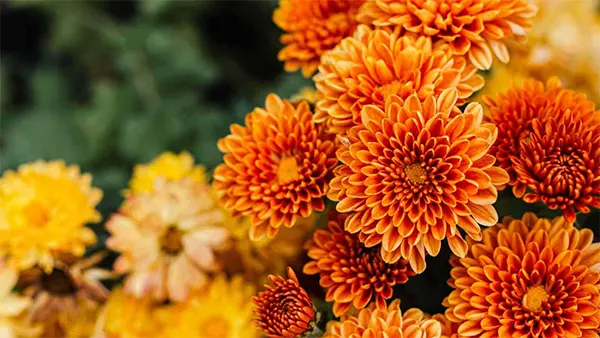 | Chrysanthemum is originally from China and is also known as the November birth flower. This species is a versatile flower that start with C and comes in a variety of colors, shapes, and sizes. |
| 3 | Cosmos | 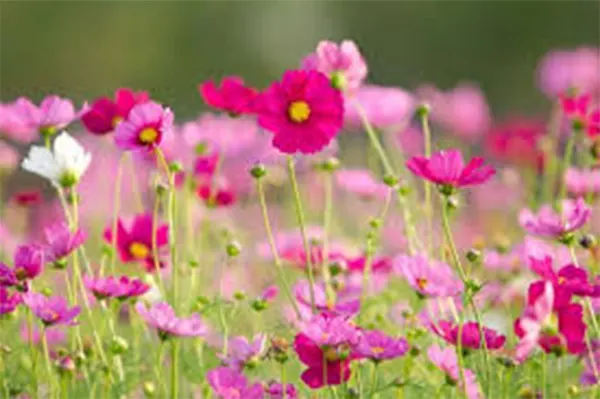 | Cosmos is an October birth flower and is known to symbolize harmony and unconditional love. The species thrives in low-nutrient soil and can be easily taken care of. |
| 4 | Crocus | 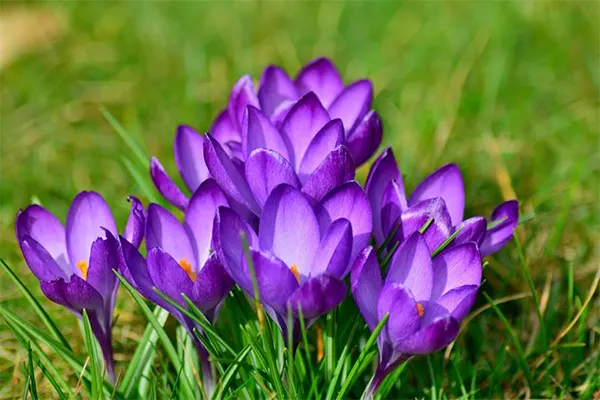 | Crocus is a low-growing seasonal flower that starts with C. This spring flower offers captivating visuals if planted in any garden space. |
| 5 | Canna Lily | 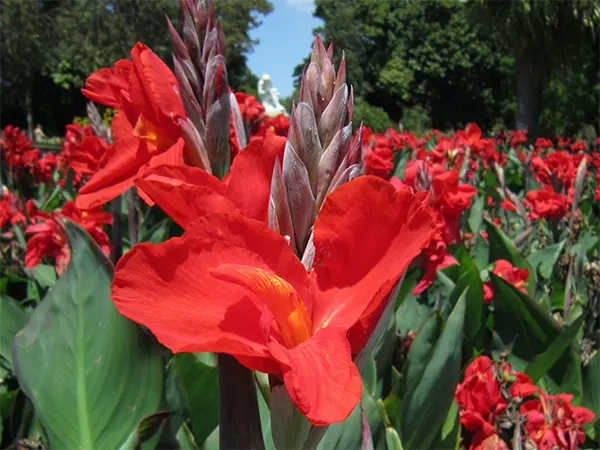 | Canna Lily belongs to the Cannaceae family and is the only flowering plant of the group. The vibrant red flowers of the genus are its main attraction. |
| 6 | Calla Lily | 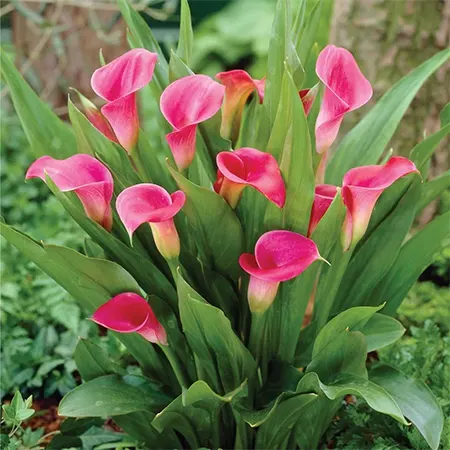 | Calla Lilies are mostly grown for their trumpet-shaped flowers and glossy green stems. Native to Southern Africa, these blooms are cultivated worldwide for their elegant flowers. |
| 7 | Camellia | 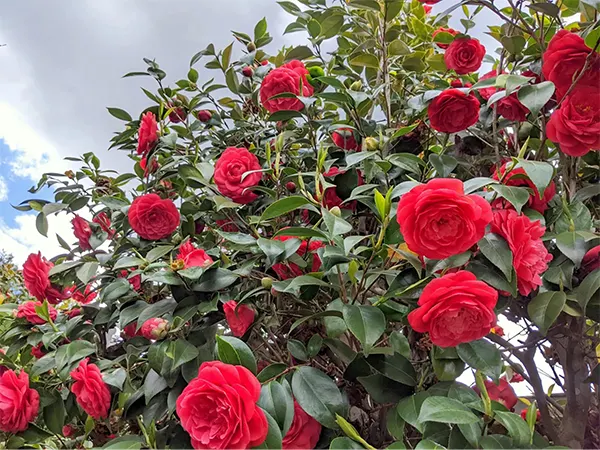 | Camellias are known for their large, showy flowers. Particularly grown in China and Japan, these are mostly used as ornamental houseplants. |
| 8 | Columbine |  | Columbine is a uniquely shaped flower and is popular for its glossy, green, and divided foliage. Botanically known as Aquilegia spp, these blooms are mostly grown in the woodlands, rocky areas, and meadows. |
| 9 | Coneflower |  | Native to North America, the coneflower is a perennial species and is mostly used as a border plant. Apart from being low-maintenance, it is highly valued for its medicinal properties. |
| 10 | Coral Bells |  | Coral Bells are widely acknowledged for their heart-shaped leaves found in different hues. Native to the woodlands of North America, these are mostly planted in the front lawns due to the beautiful, delicate flowers. |
| 11 | Coreopsis | 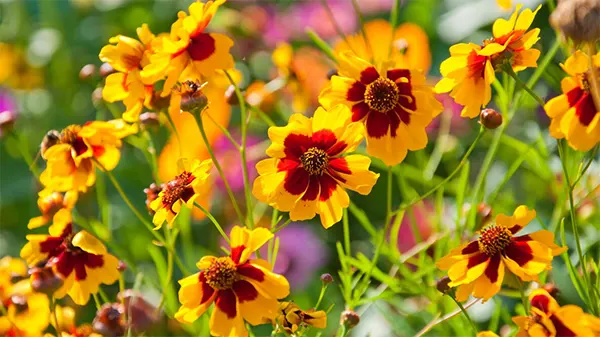 | Coreopsis is a stunning yellow flower that graces large landscapes in the United States. Mostly found in open woodlands, the genus is a hardy, drought-tolerant bloom that attracts many pollinators. |
| 12 | Cornflower | 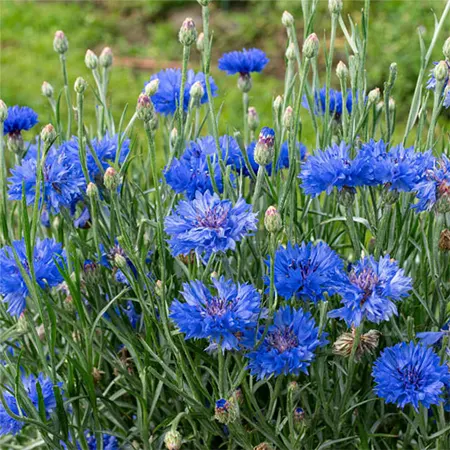 | Cornflower is an annual flowering plant and holds a deep cultural and historical significance in many European countries. Botanically known as Centaurea cyanus, these are commonly found along the roadside. |
| 13 | Canterbury Bells | 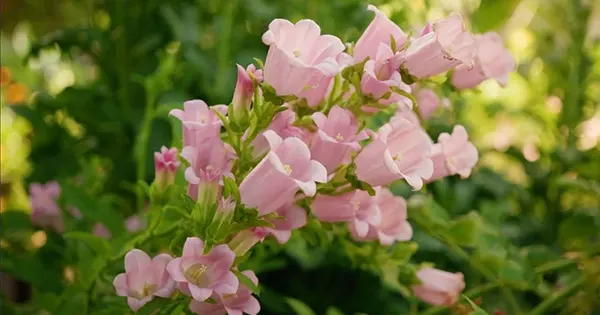 | Canterbury Bells are one of the most alluring bell flowers that start with a C. These long-lasting blooms are native to many European countries and are often used as border plants. Scientifically called Campanula medium, the genus is an annual flowering plant. |
| 14 | Cyclamen | 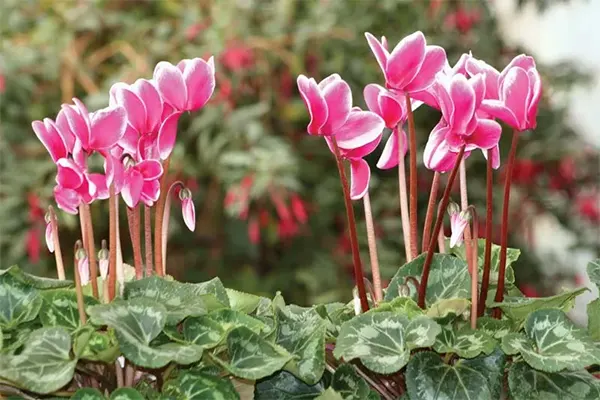 | Cyclamen is an eye-pleasing indoor plant that blooms all year long if given proper care. Native to Europe, parts of Asia, and Africa, the species is commonly grown as an ornamental houseplant. |
| 15 | Celandine |  | Although Celandines are considered jungle wildflowers, the elegant yellow blooms of the genus have various healing properties. Originally from Europe and Western Asia, these are mostly grown as garden flowers. |
| 16 | Creeping Jenny |  | Popularly called Moneywort, Creeping Jenny is a stunning ornamental plant. Scientifically called Lysimachia nummularia, the genus is low-maintenance, easy to grow, and can be grown as a hanging plant. |
| 17 | Chinese Lantern |  | Originating from Europe and Asia, the Chinese Lantern is a hardy perennial plant that is famous for its orange flowers, which are better known as lantern blooms. The rose gold bud in the center is its most striking feature. |
| 18 | Crocosmia |  | Crocosmia belongs to the Iris family and is famous for its funnel-shaped flowers found in different hues. Native to Southern and Eastern Africa, this species is prized for its ornamental value. |
| 19 | Cineraria |  | Cineraria is widely cultivated due to its shiny and vibrant flower heads found in many hues. Often grown as a ground bedding flower, these blooms can be planted indoors and outdoors as ornamental species. |
| 20 | Candytuft |  | Candytuft is a woody perennial shrub that mostly grows in clusters. The long-lasting blooms of the genus make it a popular choice for large landscapes and border cover. |
Each of these blooms has unique features that make it stand out from other genera. From bold and bright to elegant hues, the aforementioned list covers all the flowers.
Extended List of Flowers Beginning With the Letter C
If you are planning to create a vibrant front lawn or a charming backyard, you simply cannot miss flowers that begin with the letter C. Without any further delay, explore the extended list given below for your reference.
Cranesbill Geranium

One of the most popular flowers that start with C is Cranesbill Geranium. Also known as Hardy Geranium, these blooms generally have a clumping or mounding growth habit.
Preferably grown in cottages, rock gardens, and gravel gardens, the dark purple or nearly black flowers of the genus add a stunning pop of color in any landscape.
| Native Region | Europe, North America, and parts of Asia. |
| Botanical Name | Geranium sanguineum |
| Care Guide | Requires full sunlight, can also be grown in partial shade. Tolerates a wide range of soil conditions and needs moderate watering to flourish. |
Crown Imperial
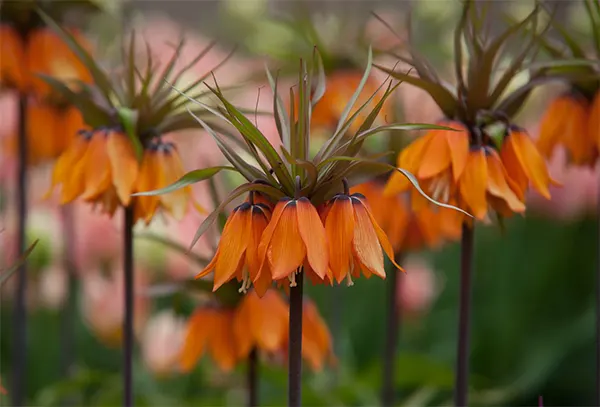
The Crown Imperial is one of the rare flowers that start with C and is commonly called the upside-down tulip. Glossy leaves surround a stout stem with a vibrant orange flower, making it one of the most charming blooms. Apart from being a hardy perennial, the Crown Imperial is often grown as a decorative garden flower because of its uniquely shaped bloom.
| Native Region | Mountainous regions of Turkey, Iran, and Central Asia. |
| Botanical Name | Fritillaria imperialis |
| Care Guide | Thrives in full sunlight or partial shade and can be grown in a permeable soil type with a range of pH levels. Regular watering is needed during the initial growing stages. |
Cotoneaster
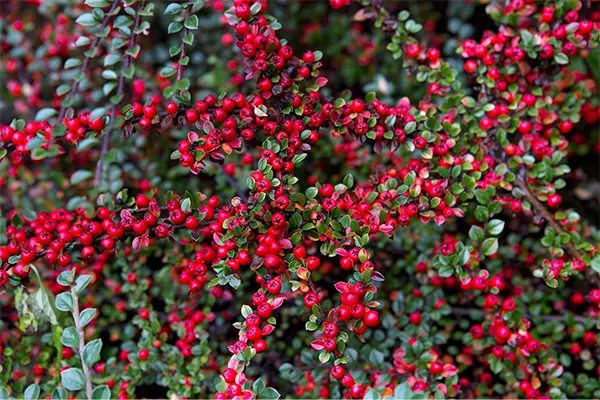
In this extended list of flowers that begin with C, Cotoneaster is the most eye-pleasing species. Known for its glossy leaves, the plant bears alluring pink or white flowers during spring and produces bright red berries in fall or winter.
Although it is a low-growing species, it is quite invasive and is often used as a ground cover plant. These plants are often added to gardens because they attract pollinators, such as bees and butterflies.
| Native Region | Temperate regions of Europe and Asia. |
| Botanical Name | Cotoneaster salicifolius |
| Care Guide | Prefer growing under direct sun exposure, but can be kept in areas having partial shade. Adapts to a wide range of soil types and does not need much watering since it is drought-tolerant. |
Clematis
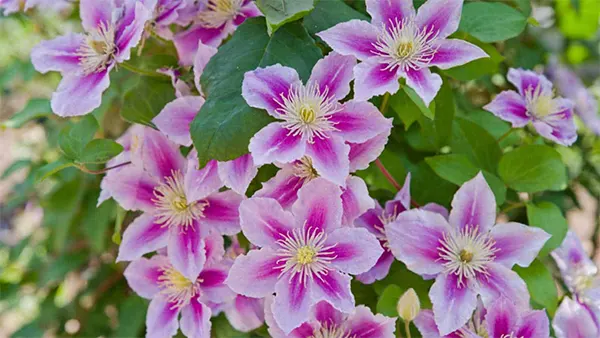
Popularly known as Leather Flower or Virgin’s Bower, Clematis is a perennial species belonging to the buttercup family. There are nearly 400 species of this genus, and it can grow up to 1–18 feet tall. Additionally, the large, showy blooms of Clematis make it an attractive plant in any landscape.
The genus can also be grown in narrow spaces, containers, or vertical areas as an indoor plant. Make sure to handle the bloom carefully during the initial growing stage, as the stems of the plant are very fragile.
| Native Region | Temperate regions of the Northern Hemisphere, particularly Asia and North America. |
| Botanical Name | Clematis spp. |
| Care Guide | Grows best in cool, moist, and well-draining soil. Try planting the genus in a spot where it can get filtered sunlight. Moderate watering is enough for the flower to flourish. |
Calendula Officinalis
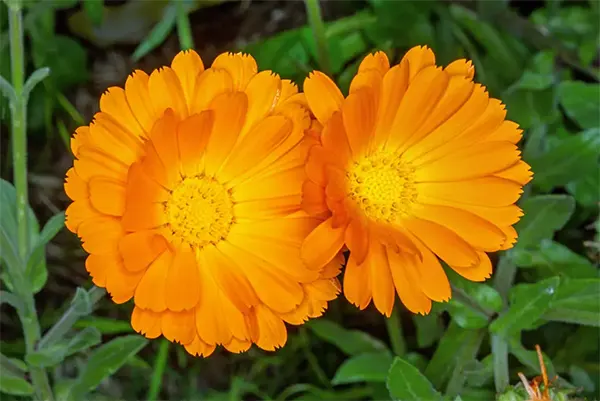
Calendula is one of the most exquisite flowers starting with the letter C. Known for its orange-yellow daisy-like blooms, this species is also used for many culinary practices. The petals of Calendula are used in salads for decorative purposes and to make herbal tea.
Also known as Pot Marigold, this genus is a perennial herb and can grow up to 80 cm tall. Though the bloom is easy to care for, it does have certain requirements to flourish.
| Native Region | Mediterranean Region (though cultivated worldwide) |
| Botanical Name | Calendula Officinalis (Pot Marigold, English Marigold) |
| Care Guide | Prefers growing in abundant sunlight. Thrives in well-draining, fertile soil type and requires average watering, only to keep the soil moist. |
Cuckoo Flower
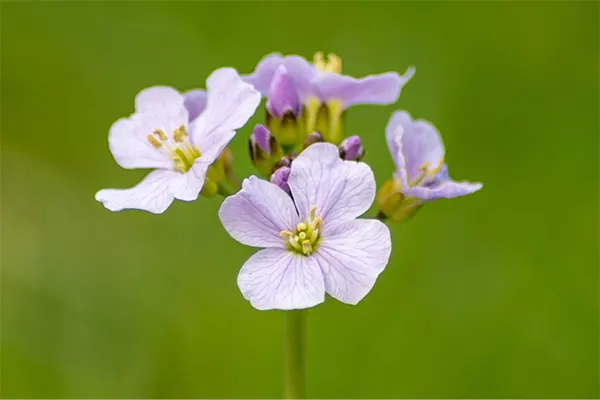
If you are looking for astonishing plants that start with C, the Cuckoo flower cannot be missed. The four-petaled blooms in pale pink color provide nectar to pollinators and attract bees, butterflies, and hummingbirds to the garden space.
Historically, the leaves of the genus were used for various medicinal purposes. The antiscorbutic properties present in the foliage of the Cuckoo Flower were used to treat ailments like skin rash and asthma. Its low-maintenance nature makes the genus loved by many novice plant lovers.
| Native Region | It grows profusely in Europe and Western Asia. |
| Botanical Name | Cardamine pratensis |
| Care Guide | Prefers growing under direct sun exposure with frequent watering, especially during hot summer days. The genus flourishes in nutrient-rich soil, which is acidic in nature. |
California Poppy
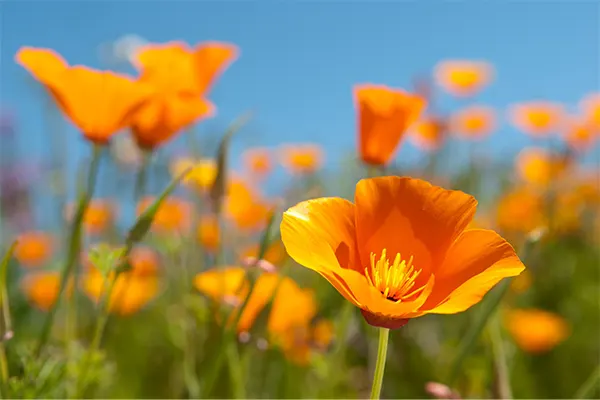
California Poppy is a short-lived perennial flower that begins with the letter C. It is an annual species known for its bright, cup-shaped blooms that can instantly uplift the vibe of any garden space.
Being a low-maintenance and drought-tolerant flower, California Poppy is widely cultivated to add a pop of color and also for its ability to attract pollinators. Even the leather-like, glossy green leaves of this orange flower are absolutely eye-pleasing.
| Native Region | Western United States and Mexico |
| Botanical Name | Eschscholzia californica |
| Care Guide | Thrives under full sun exposure and well-draining, fertile soil. Once the plant is established, water only when the topsoil feels dry. Apply a layer of organic mulch to boost the overall health of the genus. |
Campanula latifolia
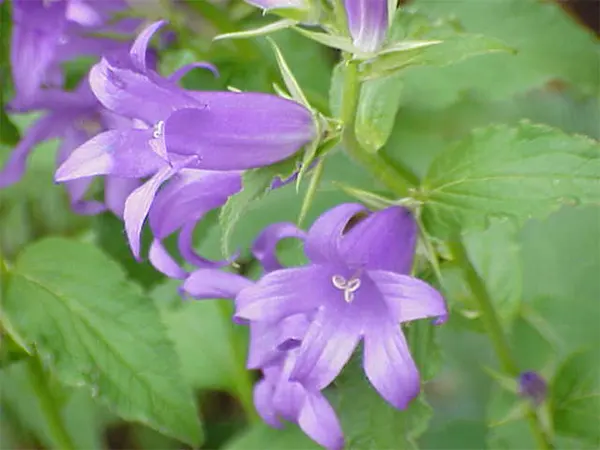
Popularly called “Great Bellflower” or “Large Bellflower”, Campanula Latifolia is yet another beautiful bloom that starts with the letter C. It is a wild perennial species mostly found in the jungles with spikes on its leaves. The purplish-blue bloom of the genus makes it a sight to behold.
If you are planning to add an elegant species to your front lawn, there is nothing better than Campanula Latifolia. Commonly found in woodlands, meadows, and rock gardens, this clump-forming perennial generally blooms in midsummer.
| Native Region | Temperate regions of Europe, Western Asia, and the Himalayan region of India and Nepal. |
| Botanical Name | Campanula Latifolia |
| Care Guide | Usually planted during Spring, the bloom grows best if planted in areas having abundant sunlight. Use a permeable soil type and keep it evenly moist with moderate watering only. |
Cape Primrose
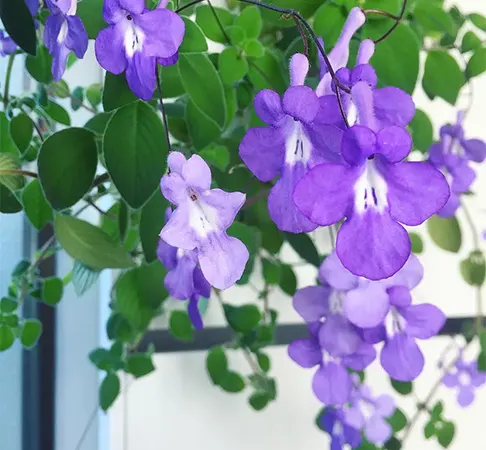
This trumpet-shaped purple flower is widely acknowledged for its purple bloom and shiny dark green leaves. Mostly grown as a houseplant, Cape Primrose can be found in many different hues, such as pink, white, black, and even in brown tones.
Although this beauty does not have any special care demands, it is prone to certain pests. Make sure to use a good-quality liquid fertilizer to prevent pest infestation.
| Native Region | Mountainous regions of Africa |
| Botanical Name | Streptocarpus |
| Care Guide | Best grown in bright indirect light. Try to place the plant near a west-facing window. Water only when the top 2–3 inches of soil feel dry, and try using a general potting mix for optimal growth of the genus. |
Celosia
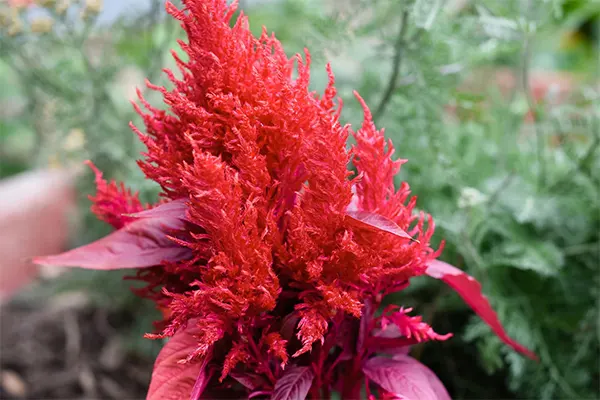
This flower that starts with C is known for its uniquely shaped, feather-like blooms. Celosia flowers are yet another striking bloom that is mainly grown for ornamental purposes. The blooms of the genus are either used for floral arrangements or dried for amazing artwork.
Often grown with companion plants like Zinnia, Marigold, or Petunia, the bloom of the flower looks like a flame and is surely a head turner if planted in the front lawn.
| Native Region | Mainly cultivated in warmer regions, especially in Tropical Africa. |
| Botanical Name | Celosia argentea |
| Care Guide | Requires full sunlight to thrive. Grows best in nutrient-rich organic soil that does not hold much water. Does not require much watering, and be sure to use containers with proper drainage holes. |
Now that you know about some of the fascinating flowers starting with C, it can be easy for you to pick the right blooms for decoration or for gifting purposes.
Key Aspects of Some Rare Flowers That Begin With The Letter C
In this section, we have mentioned some more exotic flowers that have their names start with the letter C. Let’s quickly examine some of these blooms in detail and review their key aspects.
| Flower Name | Image | Key Aspects |
| Cardinal Flower |  |
|
| Clarkia |  |
|
| Clover | 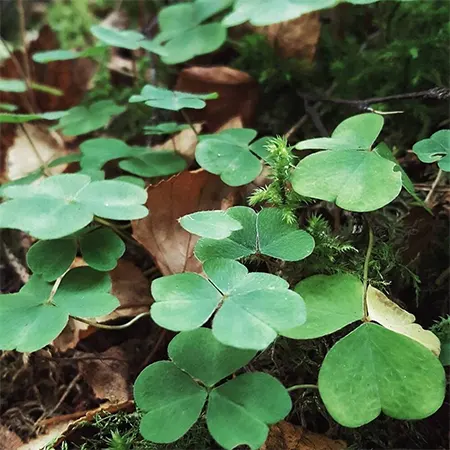 |
|
| Cockscomb | 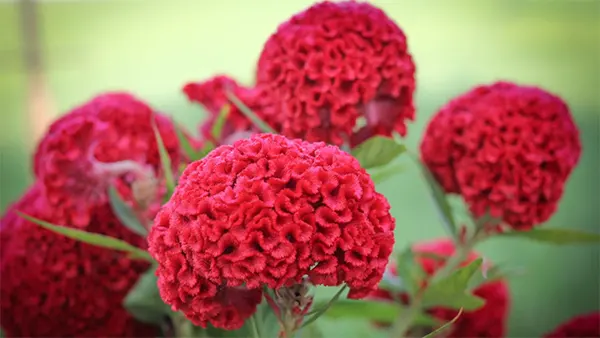 |
|
| Clivia | 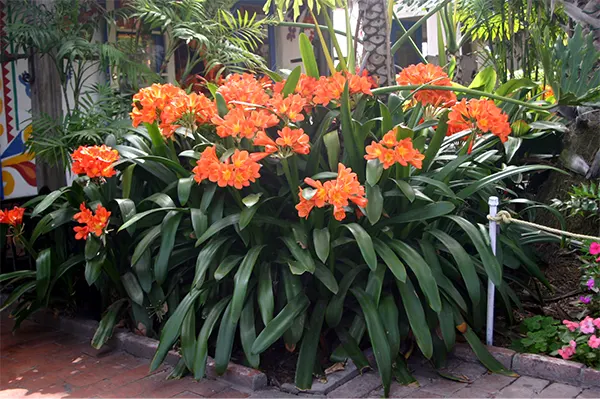 |
|
| Cuphea | 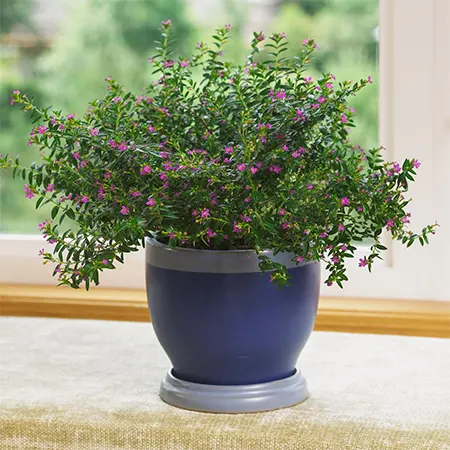 |
|
| Catmint | 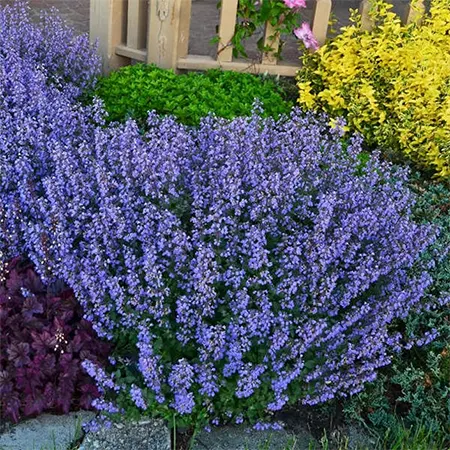 |
|
| Chionodoxa Frobesii |  |
|
| Camellia japonica |  |
|
| Christmas Cactus |  |
|
From Cardinal to Christmas Cactus, the above-mentioned list clearly shows the diversity in the floral world. Each bloom promises to bring elegance and joy to the surroundings they are being planted.
Conclusion
Whether you love the elegance of Camellias or the simplicity of Cosmos, flowers that start with C have something for everyone. Each bloom that exists has a story to tell, and the species mentioned in this article also holds deep meanings and comes from a rich botanical background.
As we wrap our floral journey, if you are a garden enthusiast or novice plant lover, be sure to add these exquisite blooms to your collection to instantly enhance the vibe of the whole space.
What is the flower with two C’s in the name?
Many flowers have two C’s in their name, such as Crocus, Cockscomb, and Curcuma.
What is a Japanese flower that starts with C?
Camellia Japonica is one of the most popular Japanese flowers that starts with the letter C.
What are some perennial flowers that start with the letter C?
Columbine, Chrysanthemum, Coral Bells, and Clematis are some examples of flower names that start with the letter C and are perennial in nature. Each bloom is appreciated worldwide for its unique appearance.
What are the popular purple flower names that begin with the letter C?
Some popular examples are Crocus, Coneflower, Cana lily, and Cyclamen. Almost all the flowers that begin with the letter C are available in multiple hues, including purple.
Are there any annual flowers that begin with the letter C?
Calendula, Clarkia, and Cosmos are annual flowers begin with the letter C, each having its own feature, and are liked by many plant enthusiasts all over the world.

